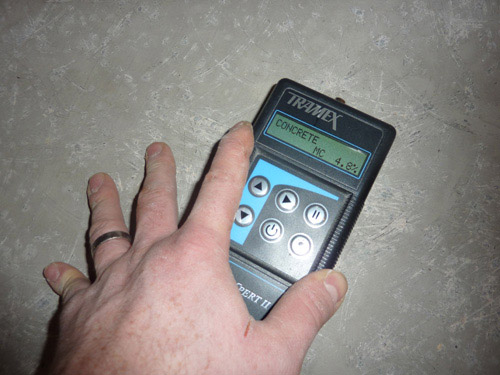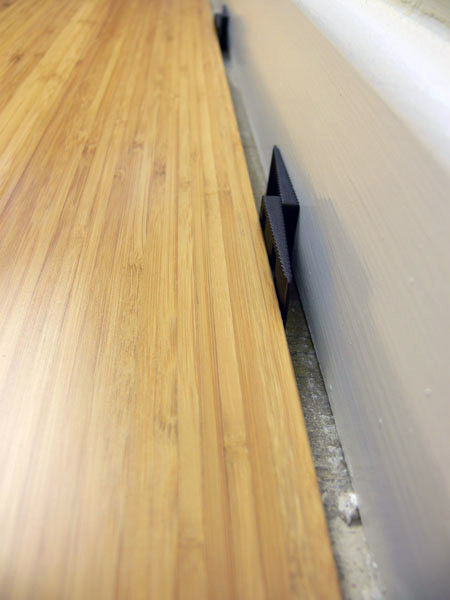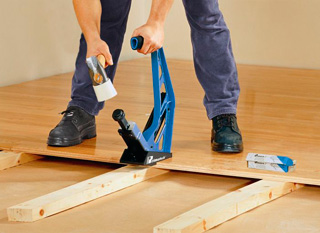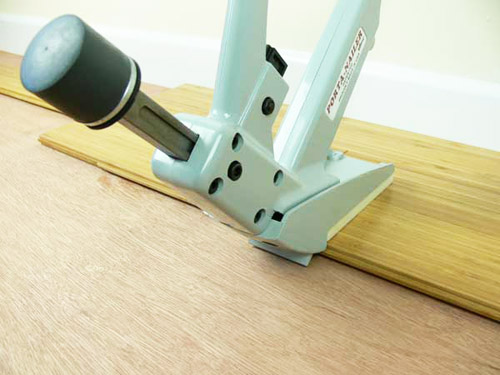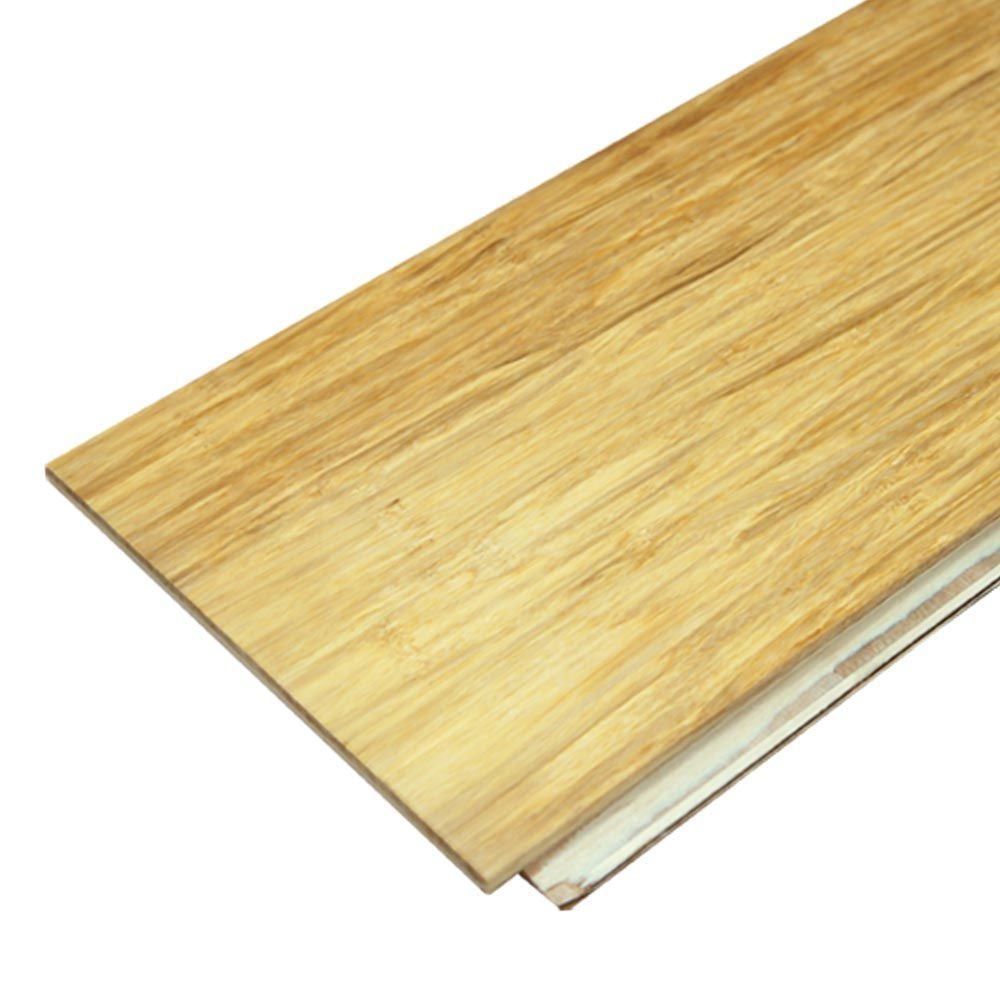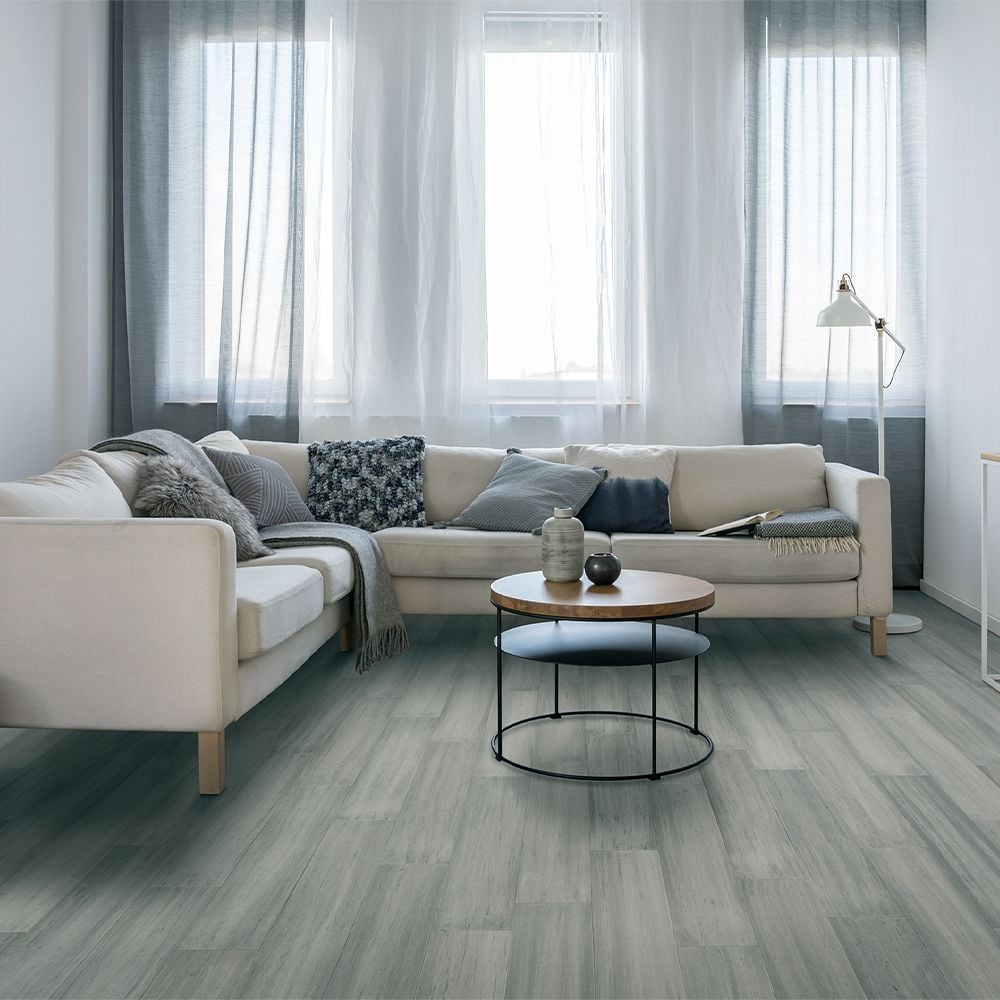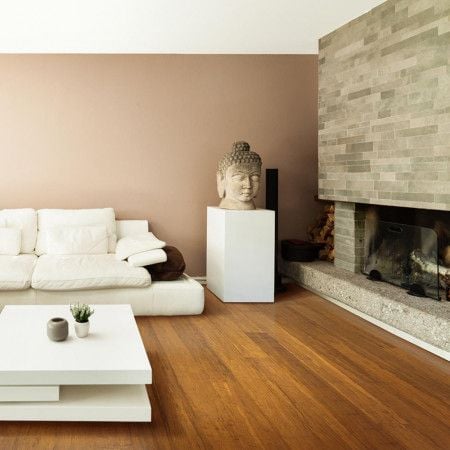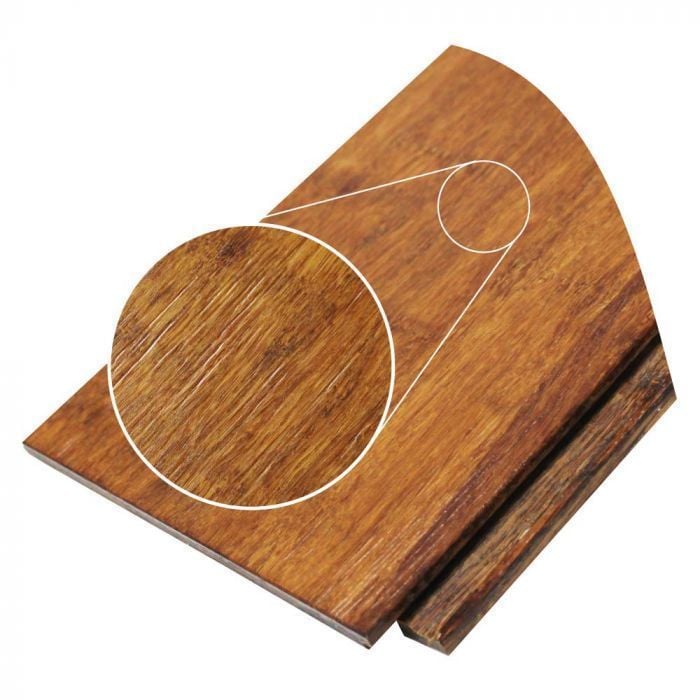Preparing your subfloor
The first thing that you should do before starting to install your bamboo floor is to make sure that your subfloor is of a sound quality, otherwise your bamboo floor may become damaged over time.
Check that your subfloor is flat, level, dry and clean by following these simple steps:
• Check that your subfloor is level. Use a spirit level or straight edge. If it is not completely flat then you will need to level it out by lining a wooden subfloor with plywood (at least 8mm thick), or use a self levelling compound on a concrete subfloor.
• Check that your subfloor is dry by using a moisture meter to test the moisture content (MC). A wooden subfloor should be 16% MC or below. A concrete subfloor should be below 6% MC. If it is not dry enough then allow it to dry naturally before re-testing.
• Thoroughly sweep and clean away any dirt, debris and chemicals from the subfloor.
Once you have followed these three steps you are ready to start installing your bamboo flooring.
Leaving an expansion gap
All types of bamboo flooring need an expansion gap of at least 10mm to allow the planks of flooring to naturally expand and contract with varying levels of humidity. If the correct size expansion gap is not left then the bamboo will have no room to move and could start to rise up and distort. The expansion gap should be left around the perimeter of the whole room including doorways and fireplaces. Flooring spacers can be used to ensure the correct size gap has been left. These are then removed once the floor has been fitted and the expansion gap is covered over by skirting or beading. Please see ‘Does bamboo flooring need an expansion gap?’
Installing bamboo over joists
Bamboo flooring must be at least 18mm thick and have a tongue and groove profile if you want to install it over joists. You have the choice of either secret nailing or secret screwing it to the joists. Start by securing the first row of bamboo flooring by either nailing or screwing into the groove of the planks. You should use at least three nails or screws per plank and be careful not to go too close to the end of the plank as this may cause it to split. Once the first row is straight and in place, you can carry on building up the rows using the same method staggering the planks of flooring however you please.
Installing bamboo over wooden floorboards or plywood
You have the choice of either gluing the bamboo directly to the floorboards /plywood, floating it over an underlay or secret nailing/secret screwing it down to the floorboards or plywood. If you decide to glue the bamboo down to the floorboards/plywood then you will need to use flexible flooring adhesive. Glue the first plank of flooring directly down to the floorboards/plywood and continue in straight lines, staggering the pattern as you please. For click fitting flooring you will just glue the planks to the floorboards/plywood as you click them into place. For tongue and groove flooring you simply fit the tongues and grooves together while gluing the planks to the subfloor.
If you choose to float click fitting bamboo flooring over an underlay, then just click and lock the planks in place, laying them loosely over the underlay. If you have tongue and groove bamboo then you will need to glue along the tongue and groove joints to fix the planks together, but you should not glue the flooring to the underlay, it should be laid loosely on top. If you choose to secret nail or secret screw then start by securing the first row of bamboo flooring by either nailing or screwing into the groove of the planks. You should use at least three nails or screws per plank and be careful not to go too close to the end of the plank as this may cause it to split. Once the first row is straight and in place, you can carry on building up the rows using the same method staggering the planks of flooring however you please.
Installing bamboo over chipboard
You have the choice of either gluing your bamboo down to the chipboard or floating it over an underlay. Chipboard is not stable enough for secret nailing or secret sewing. If you choose to glue your bamboo flooring down to the chipboard you should use flexible flooring adhesive and you can stagger the planks however you wish. Glue the first plank of flooring directly down to the chipboard and continue in straight lines. For click fitting flooring you will just glue the planks to the chipboard as you click them into place. For tongue and groove flooring you simply fit the tongues and grooves together while gluing the planks to the subfloor. If you choose to float your bamboo flooring over an underlay, then for click fitting flooring just click and lock the planks into place. For tongues and groove flooring then you should glue the tongues and grooves together, but do not glue the flooring to the underlay, it should be left to float loosely.
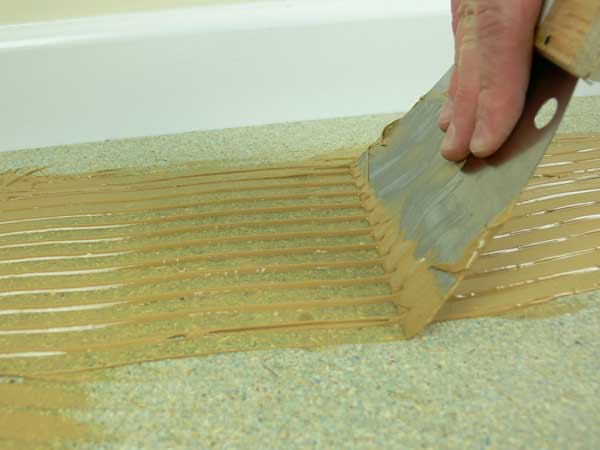
Installing bamboo over concrete or screed
You have the choice of either gluing the bamboo directly down to the concrete or floating it over an underlay. If you choose to glue the bamboo down to the concrete you should use flexible flooring adhesive. Glue the first plank of flooring directly down to the concrete and continue in straight lines, staggering the pattern as you please. For click fitting flooring you will just glue the planks to the concrete as you click them into place. For tongue and groove flooring you simply fit the tongues and grooves together while gluing the planks to the subfloor. If you choose to float click fitting bamboo over an underlay, then just click and lock the planks in place, laying them loosely over the underlay. If you have tongue and groove bamboo then you will need to glue along the tongue and groove joints to fix the planks together, but you should not glue the flooring to the underlay, it should be laid loosely on top. 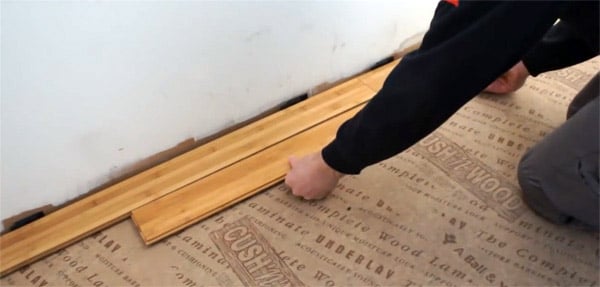
Installing bamboo over asphalt
You have the choice of gluing your bamboo flooring directly down to the asphalt or floating it over an underlay. If you choose to glue the bamboo down to the asphalt, firstly you should use a primer over the whole subfloor. Then start by gluing the first plank of flooring directly down to the subfloor (using flexible flooring adhesive) and continue in straight lines, staggering the pattern as you please. For click fitting flooring you will just glue the planks to the subfloor as you click them into place. For tongue and groove flooring you simply fit the tongues and grooves together while gluing the planks to the subfloor. If you choose to float click fitting bamboo over an underlay, then just click and lock the planks in place, laying them loosely over the underlay. If you have tongue and groove bamboo then you will need to glue along the tongue and groove joints to fix the planks together, but you should not glue the flooring to the underlay, it should be laid loosely on top.
Installing bamboo over bitumen
You must float you bamboo flooring over an underlay. If you have click fitting bamboo flooring then just click and lock the planks in place, laying them loosely over the underlay. If you have tongue and groove bamboo flooring then you will need to glue along the tongue and groove joints to fix the planks together, but you should not glue the flooring to the underlay, it should be laid loosely on top.
This installation information is only for general advice and guidance, and we always recommend that you consult a professional floor fitter who has an in depth understanding of the type of bamboo flooring that you want to install.

